
The Hep Stars are a Swedish rock band formed in Stockholm in 1963. During 1965–1966 the band was the most successful of contemporary 1960s Swedish pop groups performing in the English language. Outside the Nordic countries the band is best known as a launching point for the keyboard player and composer Benny Andersson, who went on to enjoy worldwide success with ABBA.
Malaika is a Swahili song written by Tanzanian musician Adam Salim in 1945. This song is possibly the most famous of all Swahili love songs in Tanzania, Kenya and the entire East Africa, as well as being one of the most widely known of all Swahili songs in the world. Malaika in this context means "angel" in Swahili, and this word has always been used by the Swahili speakers to refer to a beautiful girl.

The Hep Stars is the eponymous second studio album by Swedish pop group Hep Stars, released on 19 December 1966 on Åke Gerhard's Olga Records, the catalogue number LPO 04. The album can be considered the band's musical breakthrough, as five out of twelve tracks are original compositions, and nine out of the twelve tracks had never previously been recorded by other bands.
"Hawaii" is a song written by Brian Wilson and Mike Love for the American rock band the Beach Boys. It was recorded in July 1963 and released on their 1963 album Surfer Girl. It is one of the first Beach Boy songs that Hal Blaine played on, contributing timbales, but regular drummer Dennis Wilson still played. In January 1964, it was released as a single in Australia, becoming a top-10 hit. "Hawaii" made its way into the Beach Boys repertoire almost 50 years later.
"Brand New Cadillac" is a 1959 song by Vince Taylor, and was originally released as a B-side. Featured musicians on the released recording were: Joe Moretti (guitars), Lou Brian (piano), Brian Locking (bass) and Brian Bennett (drums). While not successful in the UK, it got a huge surge in popularity in continental Europe, especially the Nordic countries, with acts such as The Renegades and Hep Stars bringing it to number one in Finland and Sweden respectively. Another Swedish act, the Shamrocks brought the song to number one in France.

"Donna" is a song written by Ritchie Valens, featuring the '50s progression. The song was released in 1958 on Del-Fi Records. Written as a tribute to his high school sweetheart Donna Ludwig, it was Valens' highest-charting single, reaching No. 2 on the Billboard Hot 100 chart the following year.
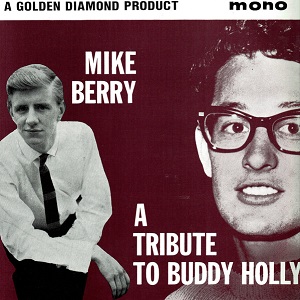
"Tribute to Buddy Holly" is a song written by Geoff Goddard, first recorded by Mike Berry and the Outlaws as a single, which was released in September 1961 on His Master's Voice records. His first chart success, it reached number 24 on the UK Singles Chart in November 1961. The song was banned by the BBC for being too "morbid", regarding the death of 1950s rock and roll singer Buddy Holly, who died in a plane crash on 3 February 1959.
"Bald Headed Woman" is a traditional blues song, covered by British rock band the Kinks on their eponymous debut album in 1964. Another British rock band, the Who, recorded it in 1964 as the B-side of their first top-ten single "I Can't Explain". The song has also been covered by other artists of the time, including Harry Belafonte, as seen in the Bob Dylan documentary, No Direction Home. It became a number one hit on Kvällstoppen for Swedish rock group Hep Stars in 1965.

"Sunny Girl" is a song written by Benny Andersson, which was recorded and released as the Swedish rock group Hep Stars tenth single in March 1966. Their second original song after "No Response", it was the song which made Andersson believe in himself as a songwriter, with support from their manager Åke Gerhard. As a result, almost all singles by the Hep Stars following "Sunny Girl" are original compositions.

Åke Gerhard was a Swedish songwriter. His songs won the title for the first three years of Sweden's Melodifestival: In 1958 "Lilla stjärna" Little star sung by Alice Babs, in 1959 "Augustin" sung by Siw Malmkvist with lyrics by Harry Sandin and in 1960 "Alla andra får varann" Everyone else gets each other with lyrics by Ulf Kjellqvist.
"Farmer John" is a song written by Don "Sugarcane" Harris and Dewey Terry, and first recorded by the two as the American R&B duo Don and Dewey, in 1959. Although the original version of the composition did not receive much attention, it was reinvigorated by the garage rock band the Premiers, whose raving remake of the song was released in 1964. The song's raw and partying atmosphere was immensely popular, reaching number 19 on the Billboard Hot 100. Following the group's national success, several additional interpretations of "Farmer John" were released, making the tune a classic of garage rock.

Hep Stars on Stage is the first live album and second overall release by Swedish rock band Hep Stars. Released in November 1965 on Olga Records, the album is composed of recordings made on 7 and 8 August 1965 at two separate Folkparks in Trollhättan and Västerås, Sweden. Hep Stars on Stage, although not the first live album by a Swedish artist, was the first live recording of a Swedish rock group released.
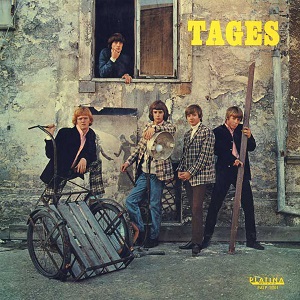
Tages is the debut studio album by the Swedish rock band Tages, released on 3 November 1965 on Platina Records. Released during a period in which the band had accumulated four top ten singles in Tio i Topp and as many on Kvällstoppen. This led the band to become one of Sweden's first and foremost pop groups, along with Hep Stars.

"No Response" is a song written by Benny Andersson, first recorded by Swedish rock group Hep Stars and released as a single in September 1965. The song was written in response to criticism drawn from other Swedish beat groups, including Shanes and Tages for their inability to write own material.
"So Mystifying" is a song written by English musician Ray Davies, first recorded by his band the Kinks for their 1964 debut album Kinks. It appears as the second track on side one, following "Beautiful Delilah", and is the first track on the album on which Ray Davies performs the lead vocals. The best known version of the song was recorded by Swedish rock group Hep Stars, whose version of the song reached the top-five on both Kvällstoppen and Tio I Topp in 1965.

"Should I" is a song written by Chad Stuart and Jeremy Clyde, first recorded by their duo Chad & Jeremy as the B-side to "I Have Dreamed", which became a top-100 hit in the US. The song was arranged by Stuart and was included a week later on their fourth studio album I Don't Want to Lose You Baby.
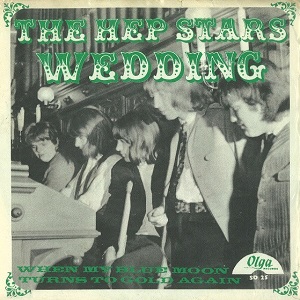
"Wedding" is a song written by Swedish musicians Benny Andersson and Svenne Hedlund, first recorded as the eleventh single by their group the Hep Stars in May 1966. "Wedding" was the second single in which the Hep Stars ventured into baroque pop, something that they'd done on their previous single "Sunny Girl" in March 1966.
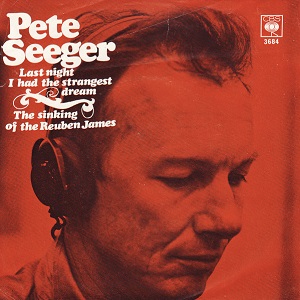
"Last Night I Had the Strangest Dream" is a song written by American folk singer-songwriter Ed McCurdy in 1950. Due to McCurdy's connection with fellow musicians, it was common in repertoires within the folk music community. The song had its first album release when Pete Seeger recorded it as "Strangest Dream" for his 1956 album Love Songs For Friends & Foes. Seeger would later re-visit the song for his 1967 album Waist Deep in the Big Muddy and other Love Songs. The strong anti-war theme of the song led it to be recorded by multiple other artists, including The Weavers (1960), Joan Baez (1962), The Kingston Trio (1963), Simon & Garfunkel (1964), and Johnny Cash who released two versions of the song during the 2000s.
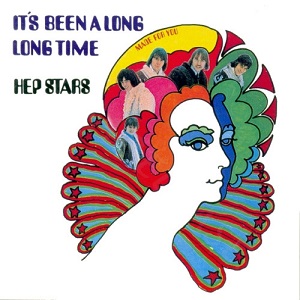
It's Been a Long Long Time is the fourth studio album by Swedish band the Hep Stars, released by Cupol Records in February 1968. Intended to be their international breakthrough, it was recorded in London with session musicians, with the only members of the Hep Stars to appear on the album being lead singer Svenne Hedlund, keyboardist Benny Andersson and tour manager Lennart Fernholm.
"Crazy 'Bout My Baby" is a song first written and recorded by musician Robert Mosley in 1963. His third solo single, it failed to chart, leading to it becoming his final single released. Initially an obscure single, it was brought to light by mainstream acts such as The Swinging Blue Jeans and Tages, the latter of which charted in Sweden with it.













